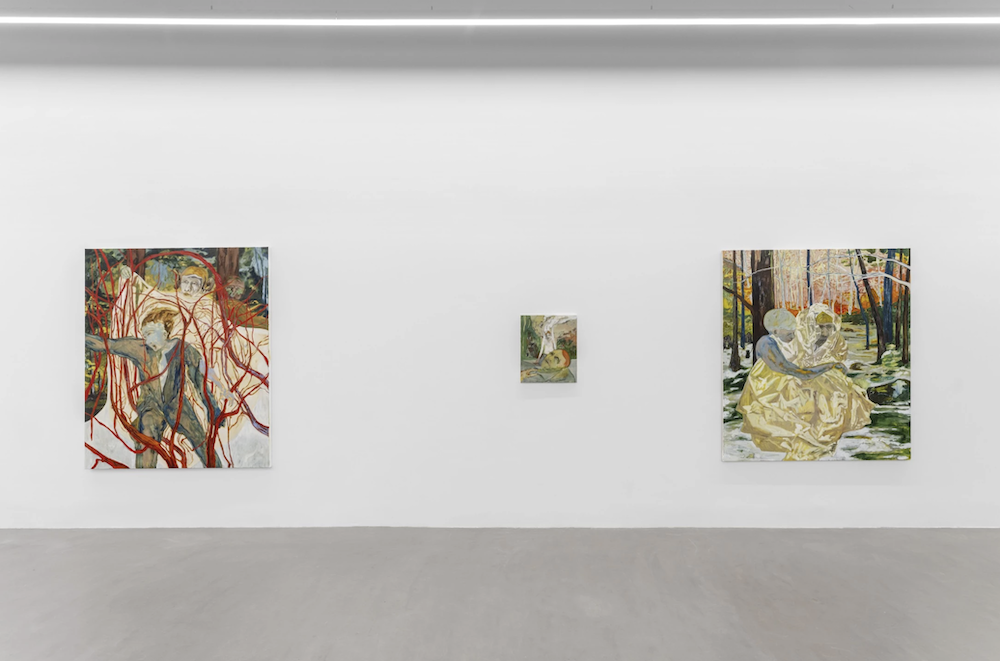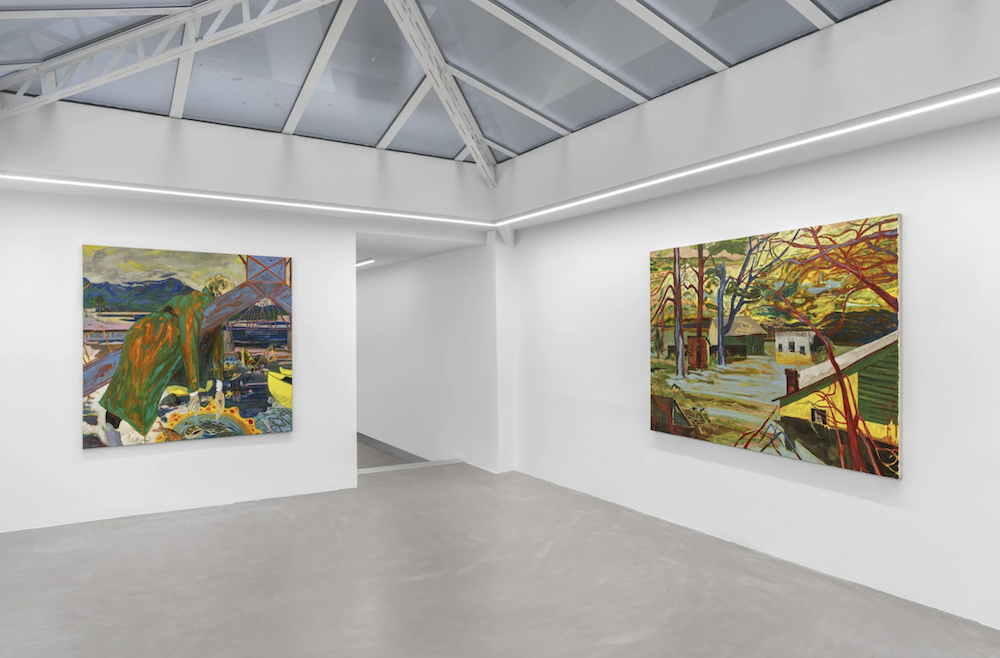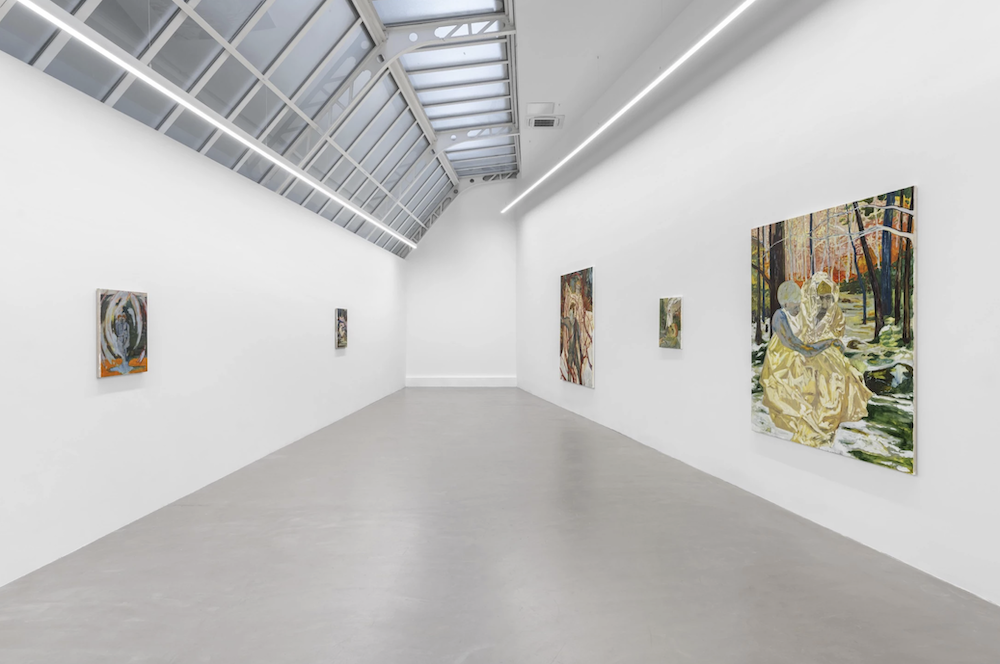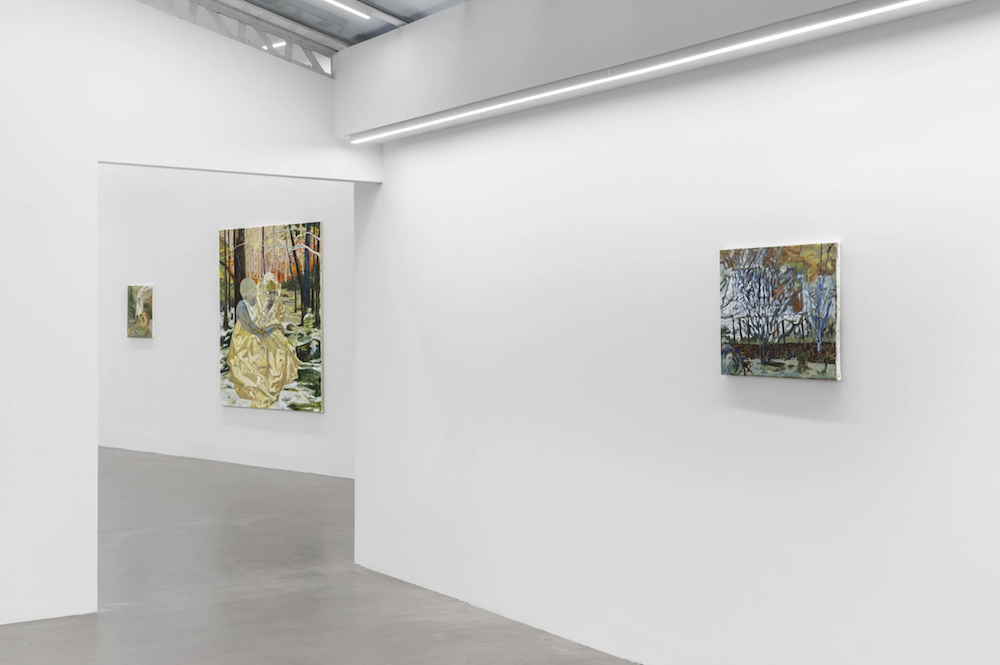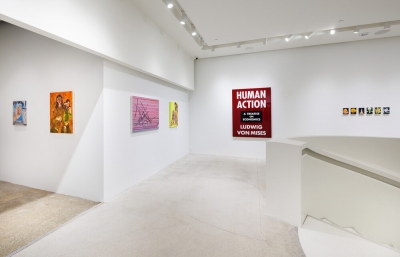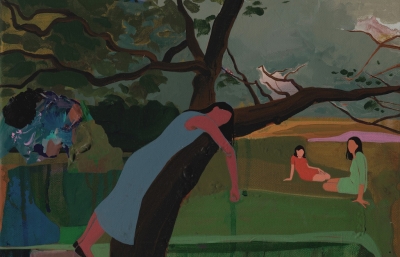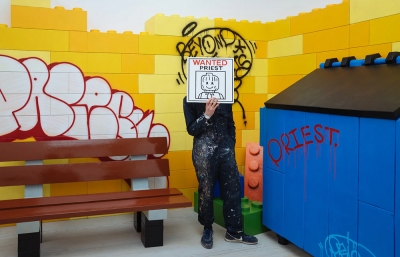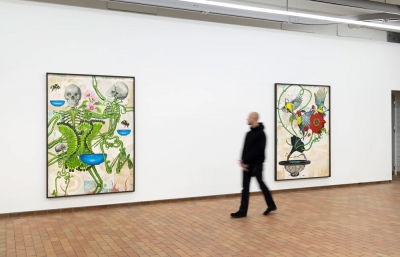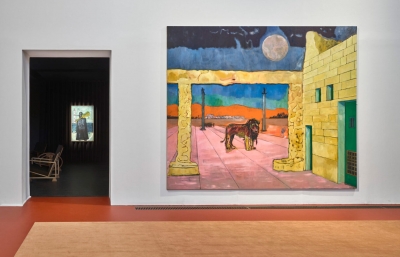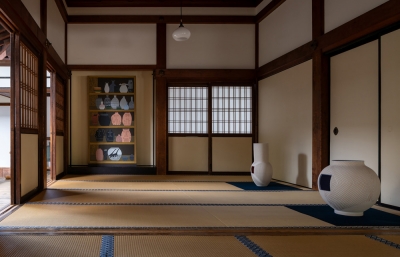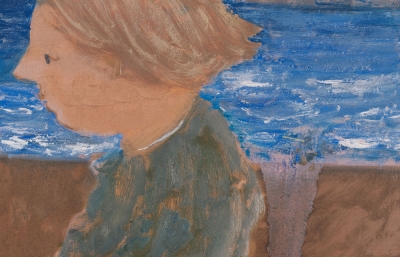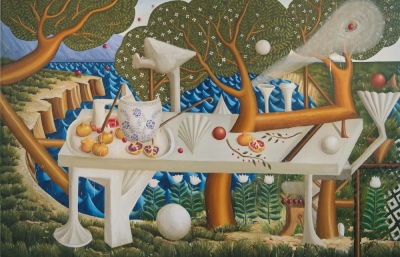Close your eyes. A creature crawls through the forest at dawn. Dew drops cling to its skin. An ear peeks out from a tuft of damp vegetation. Saliva drips slowly onto the moist earth. The scent of awakening soil rises gradually. This creature is you—your double, your triple, all the personalities you have buried. They watch you, from without and within. Trapped on this planet, yet even more so in your mind, the brambles tear at your skin. You run to escape—but from what? The figures perched upon your shoulders. And then you realize a hand holds the sheet that prevents you from moving forward.
Blake Daniels constructs a theater of figures that are simultaneously characters and symbols, inhabiting landscapes dominated by gray and brown ochres, with their dusty, tangible nuances. A subtle, enveloping mist infuses each scene with both the carnal and the morbid, evoking a wild nostalgia.
Research and dialogue with art history are central to Daniels’ practice, as they revisit and reshape techniques from the great masters of painting. The elongation of certain figures recalls El Greco, while the delicate black outlines around others evoke Manet. The use of cangiante colors bestows a sacred quality upon seemingly trivial scenes, allowing supernatural light to fall upon the ordinary.
Layered sketches, fragments, and glimpses of scenes extend beyond the frame of the finished painting, suggesting narratives where strangers, close ones, and saints intermingle.
Finally, there is the painting itself.
On the shores of Ohio, their native land among lakes, imbued with mysteries and legends, a bittersweet cast of characters and uncanny situations emerges—sometimes autobiographical, sometimes drawn from news or anecdote. All elements mingle: the body and the landscape, the transformation of natural elements and the cycles of life itself. A shared transmutation occurs, where nature and humanity merge into creatures, into chimeras. Fluidity of gender and identity arises, erasing simplistic categorization and evoking the “other-me,” this otherness that allows both self-discovery and concealment. An angelic figure, long auburn hair caught in the wind, leaps beside a sculptural, pierced Saint Sebastian. In the distance, two silhouettes evoke Adam and Eve, lost in an empty landscape. The absurdity of humanity is sublime: playing before death, playing with death, playing with mortality itself.
In Daniels’ work, figures become signs and signifiers, guiding the viewer into an elsewhere where familiar reference points dissolve. They are metamorphs, aware of their own transformation, reflecting the artist’s method: each painting appears to gestate before our eyes, emerging through bursts of orange and violet, through impastos resembling wounds or fragments of flesh. Blake Daniels’ paintings speak about cyclicality, parthenogenesis, and autophagy, about beginnings and endings. —Camille Frasca



